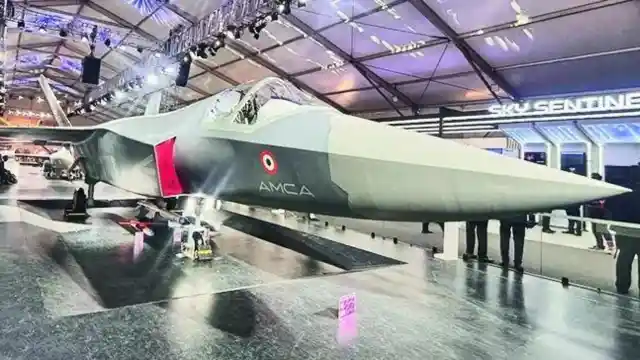India is preparing to launch a landmark collaboration with France to co-develop a powerful new jet engine for its indigenous fifth-generation stealth fighter and other advanced platforms. The move will mark a major step forward in the India–France strategic partnership and could finally help New Delhi overcome its long-standing dependence on foreign aero-engine technology.

According to senior officials, the Defence Research and Development Organisation (DRDO) will soon seek approval from the Cabinet Committee on Security for the ambitious project with French aerospace giant Safran. The plan involves 100% transfer of technology to jointly design, develop, test, certify, and manufacture the new 120-kilonewton engines in India. The project, to be executed by DRDO’s Gas Turbine Research Establishment (GTRE), carries an estimated cost of nearly $7 billion.
Safran, which already produces several helicopter engines in India, has been chosen as the lead partner for the Advanced Medium Combat Aircraft (AMCA), the country’s twin-engine fifth-generation fighter. Defence Minister Rajnath Singh also confirmed the upcoming venture while speaking at The Economic Times World Leaders Forum, saying India was “about to start engine manufacturing work in India with the French company Safran.”
Why This Matters
For decades, India’s fighter jet programs have struggled due to the inability to produce a homegrown aero-engine with the right thrust-to-weight ratio. The Tejas light combat aircraft, for example, faced production delays because of a two-year lag in the delivery of GE-F404 turbofan engines contracted from US firm General Electric in 2021. Integration issues with weapons and radars further slowed down progress.
Meanwhile, Hindustan Aeronautics Limited (HAL) and GE are still finalizing a deal worth $1.5 billion to co-produce GE-F414 engines in India, with 80% technology transfer, to power the Tejas Mark-2.
The Safran deal, by contrast, promises India full intellectual property rights and licensing control—something never offered by Western engine makers before. Officials say the collaboration will not only power the AMCA but also create a complete ecosystem for aero-engine manufacturing in India, including supply chain development.
The Road Ahead
In May, the defence ministry approved a new program execution model for AMCA prototype development, which encourages greater private sector involvement. The fighter, designed to feature advanced stealth elements like serpentine air-intakes, an internal weapons bay, and next-generation sensor fusion, is expected to enter production around 2035.
The Indian Air Force plans to induct seven squadrons (126 jets) of the AMCA. The first two squadrons will use GE-F414 engines, while the remaining five will be powered by the new 120-kilonewton engines co-developed with Safran.
If successful, the project could break India’s decades-old dependence on foreign suppliers and establish the country as a serious player in the global aerospace engine sector.
